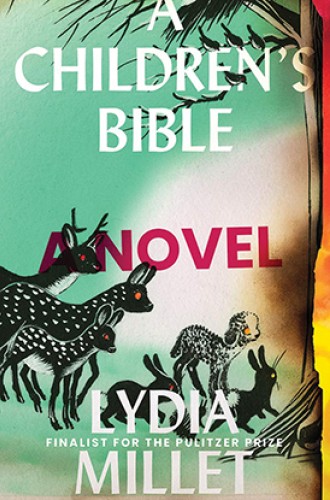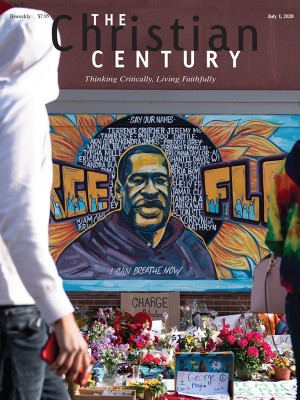Lydia Millet’s A Children’s Bible is a believable climate fable
The dystopian novel feels about 15 minutes away from becoming reality.
Four years ago, the novelist Amitav Ghosh wondered in his nonfiction book The Great Derangement: Climate Change and the Unthinkable why literary fiction has largely failed to address ecological catastrophe. “If the urgency of a subject were indeed a criterion of its seriousness,” he argued, “then, considering what climate change actually portends for the future of the earth, it should surely follow that this would be the principal preoccupation of writers the world over.” Tracing the history of the modern novel, Ghosh saw that by the mid-20th century, literary culture expected serious novels to center the human and to tell stories that were believable. Novels had to be plausible and focused on the everyday details of individual emotional lives. Climate disasters were too unbelievable to enter into literary fiction, and so such disasters and their aftermath were largely consigned to genre fiction.
But such events have begun to feel all too believable. This week I was hunkered down in my home in Durham, North Carolina, stocked with weeks worth of canned goods and pasta, avoiding a new virus whose outbreak some have linked to human abuse of the earth. A steady rain fell outside, a flood warning flashed on my phone, and I read about two dams breaking in Michigan, threatening a release of toxic buildup at a Dow chemical plant.
Read our latest issue or browse back issues.
When I picked up Lydia Millet’s A Children’s Bible, its story felt about 15 minutes away from becoming reality. In this fable of climate change and generational divides, an intense hurricane hits the East Coast, where a group of families is summering together. In the aftermath of the hurricane, they forge polluted waters, fight new diseases, and find a safe home to hunker down in while they contend for scarce resources.
Shortly before the storm hits, one of the youngest children, Jack, begins reading a children’s Bible, and he lets its stories guide him through the apocalypse. He collects animals to save from the hurricane; he identifies a stranger who guides them to safety as their Moses.
The novel is filled with biblical allusions. For the biblically literate, they are perhaps more distracting than enriching. (Although my husband and I had fun quizzing each other: Did you catch the Cain and Abel characters? The tower of Babel? The pierced feet and hands?) Still, these allusions lend a sense of ultimacy—of mythic weight—to the novel. It isn’t just a story about survival; it’s a story about the meaning of life and the future of humanity. And for the most part, Millet’s use of scripture is respectful to people of faith. The lessons Jack takes from his Bible are often simple and true: “If you have a good garden, don’t leave it,” and “we were supposed to care for the animals, not sacrifice them.”
The book’s greatest strength is in its portrayal of conflict between parents and children. Even before the storm, the ten-year-olds and the teenagers bond in contempt for their parents, who organize their vacation around morning mimosas and afternoon happy hours, leaving the young people to their own devices. “They liked to drink: it was their hobby, or—said one of us—maybe a form of worship,” explains Eve, one of the children and the book’s narrator. The children do not understand their parents’ way of life. “Didn’t they know there were urgent subjects? Questions that needed to be asked? If one of us said something serious, they dismissed it.” The adults live in pleasure-seeking denial.
Eve’s spare narration keeps the novel from veering into sentimentality, and it keeps readers from being overwhelmed by fear or grief. (Those are emotions the parents might give into but never these children, raised with grit and resilience by parents who fail to demonstrate capacity for either.) Not one of these adults is adulting. That’s the job of the teenagers.
When the storm hits, the parents, afraid to leave and lose the security deposit on the rental, make a short-lived attempt to secure the house. When they can’t keep the water from flooding in, they give up, dosing themselves with ecstasy, alcohol, and sex. The children, who have mostly been living outdoors since before the storm even started, leave their Edenic garden. They take up with a groundskeeper they find sleeping in a basket of reeds, crossing the flooded roads to a safe home on higher ground.
Eve describes the parents as “artsy, educated types.” They are college professors and doctors, sculptors and psychologists. They are, perhaps, exactly Millet’s readership: people like me who think of ourselves as literate and engaged, experts in gender studies or history, artists who draw awareness to foreign wars—but mostly, we are living in our small worlds, willfully ignoring the real threatening danger. This book is like an arrow pointed perfectly to the heart of its intended reader. It wounds, in the best way.
A Children’s Bible is being hailed as the next great novel, the one that will be taught in 11th-grade English classes for decades to come. But that’s not quite right; its audience isn’t teenagers. It’s written for an older generation, to shock us awake. And it does that well, while refusing to offer simplistic solutions. The characters struggle to find hope because they struggle to understand how art and science work together. At times, the novel seems even contemptuous of art. Perhaps Millet wants us to see that our current art, captive as it is to capitalism, is failing to portray reality.
Millet refuses easy solutions, and she refuses to offer readers unearned hope. The novel’s ending is unsatisfactory, but this may be intentional. Ultimately the children in this story are subject to the sins of their parents, giving in to a self-isolating, self-protecting life organized around the shelter of wealth. Ecofeminist Donna Haraway has suggested that our only way forward, ecologically, is to “stay with the trouble.” We ought not to seek technocratic solutions or divine deliverance. Instead, we ought to stay entangled in the work of making surprising connections, living and dying well with each other.
Millet’s young people avoid the traps of seeking deliverance from technology or from a deity in the sky, but they fail to stay with the trouble, to build collaboratively with other creatures. Instead, they build walls. This isn’t an entirely hopeful ending, and I think Millet knows that. The future is too complicated for a simple way forward.
A Children’s Bible is a book for this moment—beautifully written, apposite, and convicting. It gives us a very good gift: a clear-eyed view of our complicity and complacency—and of the cost the coming generation will bear.






